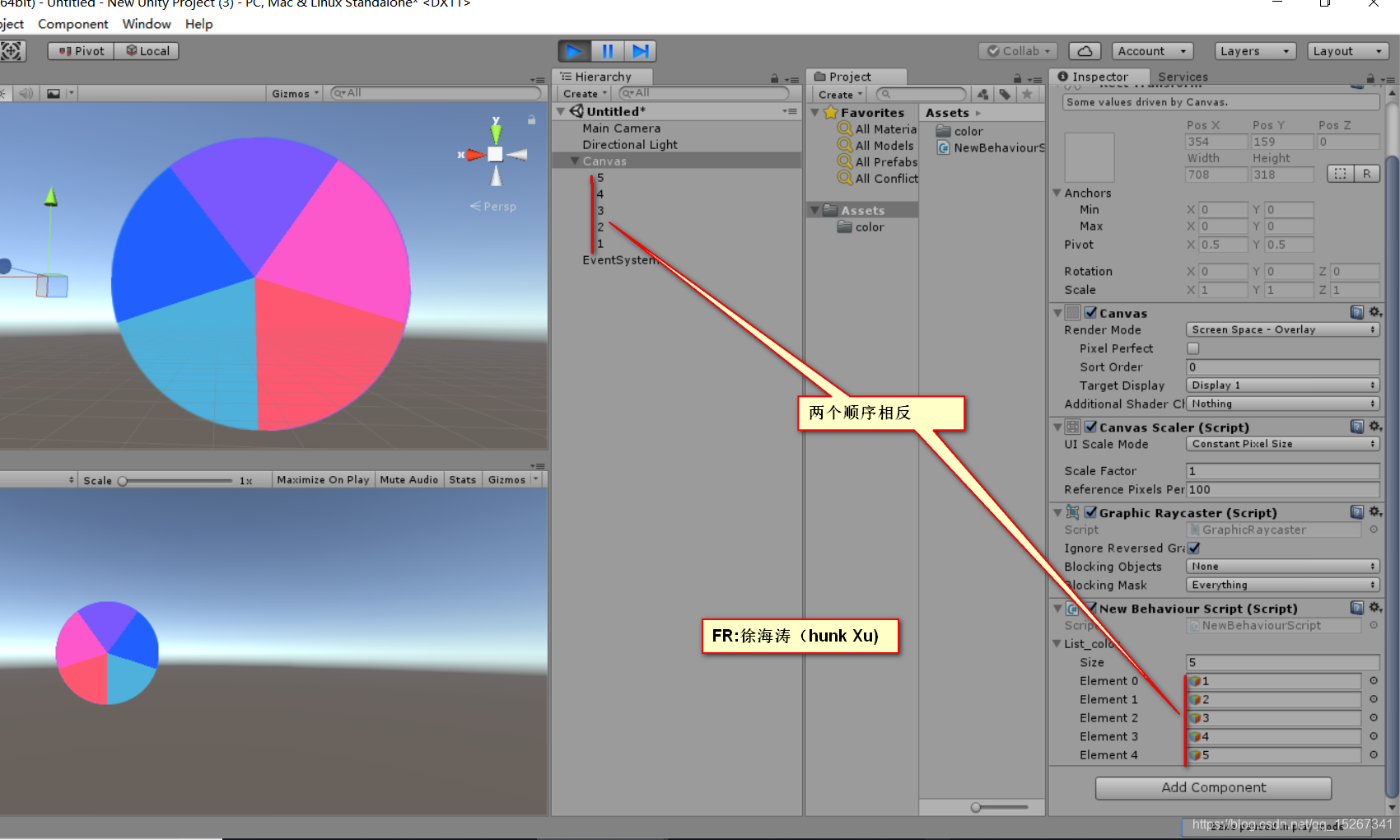Unity制作饼图
本文共 1164 字,大约阅读时间需要 3 分钟。


using System.Collections;using System.Collections.Generic;using UnityEngine;using UnityEngine.UI;public class NewBehaviourScript : MonoBehaviour { public List list_color = new List (); private List mmm=new List (); // Use this for initialization void Start () { float tempall = 0; mmm.Add(0.2f); mmm.Add(0.2f); mmm.Add(0.2f); mmm.Add(0.2f); mmm.Add(0.2f); for (int i = 0; i < mmm.Count; i++) { tempall += mmm[i]; //list_color[i].GetComponent ![]() ().fillAmount = tempall / all; setFillAmount(list_color[i], tempall, 0.3f); } } private void setFillAmount(GameObject obj, float fillAmount, float speed) { float fillTemp = obj.GetComponent
().fillAmount = tempall / all; setFillAmount(list_color[i], tempall, 0.3f); } } private void setFillAmount(GameObject obj, float fillAmount, float speed) { float fillTemp = obj.GetComponent ![]() ().fillAmount; //Debug.Log("fillTemp:"+fillTemp); if (fillTemp + Time.deltaTime * speed < fillAmount) obj.GetComponent
().fillAmount; //Debug.Log("fillTemp:"+fillTemp); if (fillTemp + Time.deltaTime * speed < fillAmount) obj.GetComponent ![]() ().fillAmount = fillTemp + Time.deltaTime * speed; else obj.GetComponent
().fillAmount = fillTemp + Time.deltaTime * speed; else obj.GetComponent ![]() ().fillAmount = fillAmount; } // Update is called once per frame void Update () { }}
().fillAmount = fillAmount; } // Update is called once per frame void Update () { }}
转载地址:http://hync.baihongyu.com/
你可能感兴趣的文章
NLog 自定义字段 写入 oracle
查看>>
NLog类库使用探索——详解配置
查看>>
NLP 基于kashgari和BERT实现中文命名实体识别(NER)
查看>>
NLP 模型中的偏差和公平性检测
查看>>
Vue3.0 性能提升主要是通过哪几方面体现的?
查看>>
NLP 项目:维基百科文章爬虫和分类【01】 - 语料库阅读器
查看>>
NLP_什么是统计语言模型_条件概率的链式法则_n元统计语言模型_马尔科夫链_数据稀疏(出现了词库中没有的词)_统计语言模型的平滑策略---人工智能工作笔记0035
查看>>
NLP三大特征抽取器:CNN、RNN与Transformer全面解析
查看>>
NLP学习笔记:使用 Python 进行NLTK
查看>>
NLP度量指标BELU真的完美么?
查看>>
NLP的不同研究领域和最新发展的概述
查看>>
NLP的神经网络训练的新模式
查看>>
NLP采用Bert进行简单文本情感分类
查看>>
NLP问答系统:使用 Deepset SQUAD 和 SQuAD v2 度量评估
查看>>
NLP项目:维基百科文章爬虫和分类【02】 - 语料库转换管道
查看>>
NLP:使用 SciKit Learn 的文本矢量化方法
查看>>
nmap 使用方法详细介绍
查看>>
Nmap扫描教程之Nmap基础知识
查看>>
nmap指纹识别要点以及又快又准之方法
查看>>
Nmap渗透测试指南之指纹识别与探测、伺机而动
查看>>